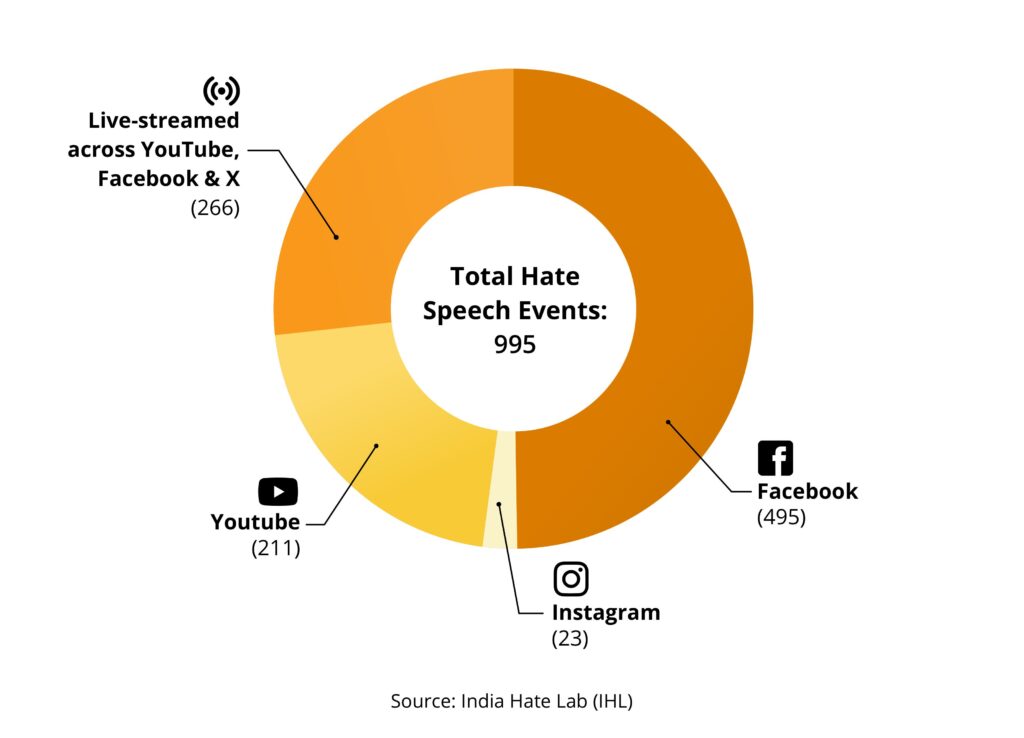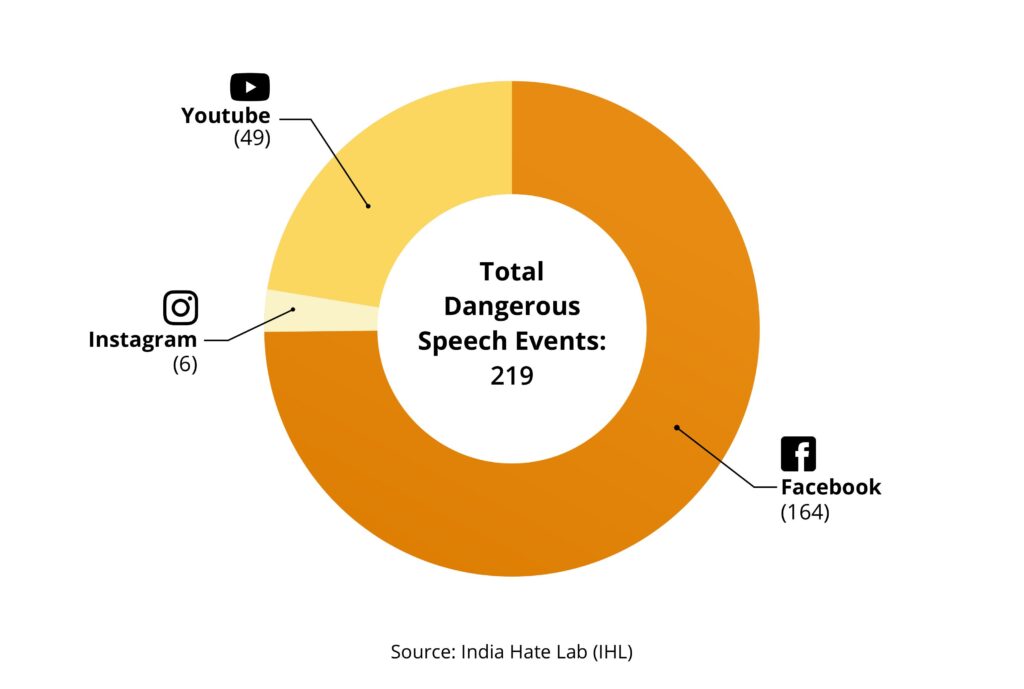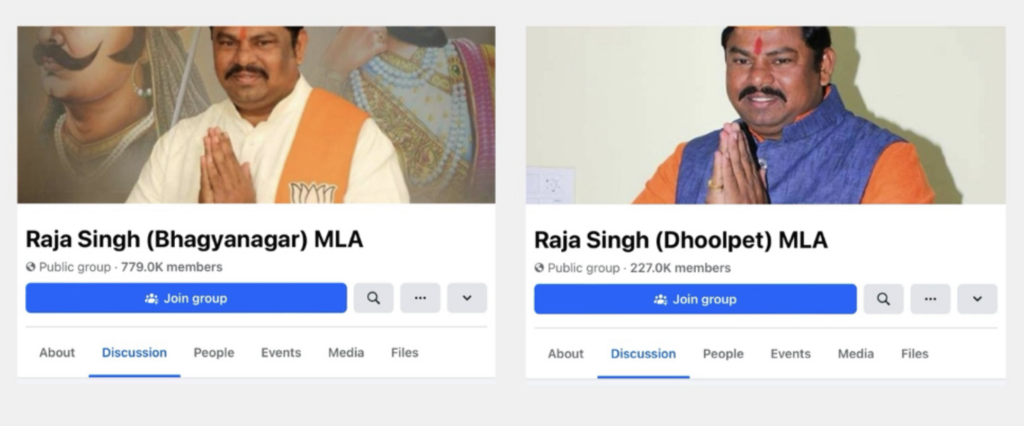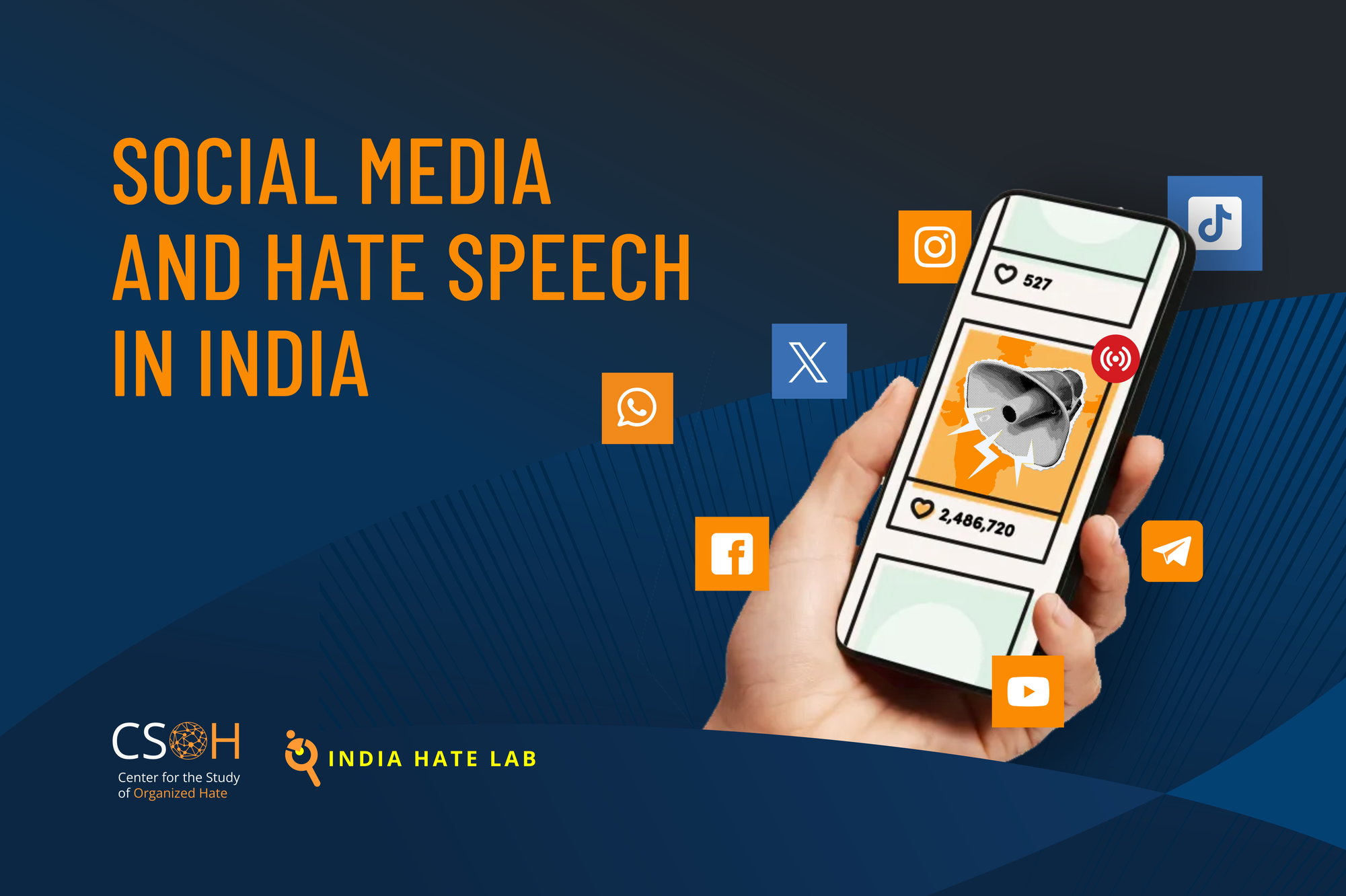Introduction
This report analyzes the role of social media platforms in the dissemination and amplification of verified in-person hate speech events in India in 2024, covering various types of mass gatherings. These include political rallies, electoral campaign events, religious processions, protest marches, demonstrations, and cultural or nationalist gatherings. In other instances, they are organized with the express objective of harassing minorities.
Social media platforms—Facebook, Instagram, WhatsApp, YouTube, Telegram, and X (formerly Twitter)—were key instruments in enabling, amplifying, and mainstreaming hate speech and extremist ideologies in India, as was the case globally. In the Indian context, these platforms were extensively utilized to articulate and spread Hindu nationalist ideology and anti-minority rhetoric. Of the 1,165 in-person hate speech events targeting Muslim and Christian minorities in 2024, 995 videos were traced back to their original sources on social media, where they were first uploaded or live streamed. Facebook and YouTube emerged as major platforms for dissemination, with Facebook alone accounting for 495 hate speech videos, while 211 videos were exclusively shared on YouTube. Notably, 266 anti-minority hate speeches delivered by senior Bharatiya Janata Party (BJP) leaders—primarily during the April–June general elections—were simultaneously live streamed across YouTube, Facebook, and X through the official accounts of the party and the leaders.
Given the logic of virality, social media platforms facilitate the rapid and widespread circulation of hateful content while also elevating the most extreme instances of hate speech through algorithmic amplification. Despite their own community standards prohibiting hate speech, social media platforms failed to enforce their guidelines, allowing violative content to spread unchecked in the Indian context in 2024.
Key Findings
- Of the 1,165 in-person hate speech events recorded in 2024, 995 were first shared or live-streamed on social media platforms, with Facebook leading at 495 instances, followed by YouTube, Instagram, and X.

- BJP leaders and affiliated groups use Facebook Live, YouTube Live, and X Live to broadcast hate speech at election rallies and public events.
- BJP leaders, including Prime Minister Modi, Amit Shah, and Yogi Adityanath, have leveraged their massive digital following to amplify hate-filled election speeches.
- Of 259 recorded instances of dangerous speech, including explicit calls for violence, 219 were first shared or live streamed on social media. Facebook accounted for 164 (74.9%), YouTube for 49 (22.4%), and Instagram for 6.

- As of February 6, 2025, only 3 of the reported videos have been removed by Facebook, while the remaining 98.4% continue to stay up across different platforms despite clear violations of community standards.
- Despite being banned under Meta’s Dangerous Individuals and Organizations (DOI) policy, BJP legislator T. Raja Singh continues to have a strong presence on Facebook and Instagram (collective following of over 1.1 million) through an extensive network of proxy accounts, fan pages, and supporter groups.

- Hate speech content remains available even after removal due to re-uploading, repackaging into shorter clips, and dissemination across multiple platforms.
